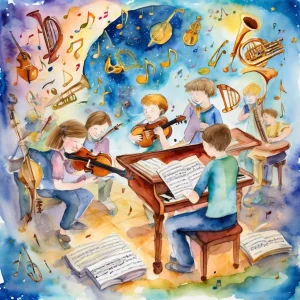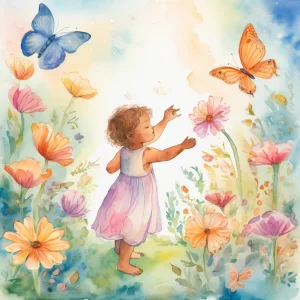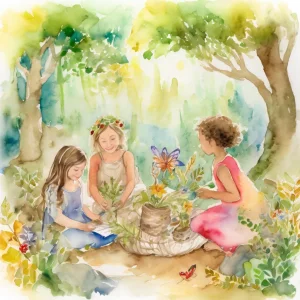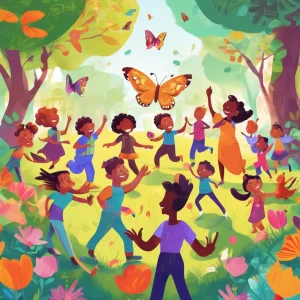Activity
Similar Activities
Empathy Harmony: Musical Language Exchange Adventure
Children’s Age: 11–15 years
Activity Duration: 35 – 45 minutes
The "Musical Language Exchange" activity is designed for children aged 11 to 15 to explore empathy through music, instruments, and foreign languages. Participants will engage with …
Activity Duration: 35 – 45 minutes
Musical Freeze Painting: A Creative Dance Adventure
Children’s Age: 3 years
Activity Duration: 10 – 20 minutes
An engaging activity combining painting with musical freeze dance to promote creativity and play skills.
Activity Duration: 10 – 20 minutes
Picnic Adventure: Pretend Cooking Play for Toddlers
Children’s Age: 2–3 years
Activity Duration: 10 – 30 minutes
An imaginative activity where children (ages 2-3) engage in pretend cooking during a picnic adventure.
Activity Duration: 10 – 30 minutes
Cultural Creatures: Stop-Motion Animation Adventure
Children’s Age: 4–9 years
Activity Duration: 10 – 25 minutes
An interactive activity using technology to create stop-motion animations exploring plants and animals from diverse cultures.
Activity Duration: 10 – 25 minutes
Enchanted Tales: Family and Friends Story Theater
Children’s Age: 2–7 years
Activity Duration: 10 – 25 minutes
An interactive storytelling activity promoting language, academic, and social development.
Activity Duration: 10 – 25 minutes
Empathy Tales: The Storybook Creation Adventure
Children’s Age: 2–12 years
Activity Duration: 10 – 15 minutes
This activity helps children aged 2 to 6 develop empathy by creating a personalized storybook. You will need paper, crayons, stickers, scissors, glue, and story prompts like "A Day…
Activity Duration: 10 – 15 minutes
Magical Storytelling: Create Together with Friends
Children’s Age: 4–6 years
Activity Duration: 15 – 30 minutes
In the Create a Story Together activity, children will explore their creativity, language skills, and teamwork. Get small pieces of paper, colored pencils, and a container ready. K…
Activity Duration: 15 – 30 minutes
Enchanted Nature Walk: The Sensory Adventure
Children’s Age: 1–1.5 years
Activity Duration: 10 minutes
Engage your 12 to 18-month-old in the Sensory Nature Walk to boost their language, sensory, and social skills through outdoor exploration. Prepare for the adventure by dressing you…
Activity Duration: 10 minutes
Enchanted Sensory Bottle Exploration for Little Ones
Children’s Age: 6 months – 1.5 years
Activity Duration: 5 minutes
Engage your child aged 6 to 18 months in a sensory bottle exploration activity to boost their communication, motor skills, and social-emotional development. Create a sensory bottle…
Activity Duration: 5 minutes
Seasonal Textures: Infant Sensory Exploration Activity
Children’s Age: 3 – 6 months
Activity Duration: 10 minutes
Engage infants aged 3 to 6 months in a sensory exploration activity focusing on seasonal textures for motor, adaptive, and language development. Gather soft fabric swatches, natura…
Activity Duration: 10 minutes
Enchanted Forest Tales: Nature Play Theater
Children’s Age: 4–6 years
Activity Duration: 15 – 25 minutes
Engage children aged 48 to 72 months in the "Nature Play Theater" activity, fostering communication skills and ecological awareness. Set up an outdoor performance area with natural…
Activity Duration: 15 – 25 minutes
Adventure of Rhyme and Move Outdoor Magic
Children’s Age: 3–4 years
Activity Duration: 10 – 25 minutes
"Rhyme and Move Outdoor Adventure" is a fun activity that combines nature-themed rhymes with movement in an outdoor setting. Children get to explore the outdoors, practice language…
Activity Duration: 10 – 25 minutes




























